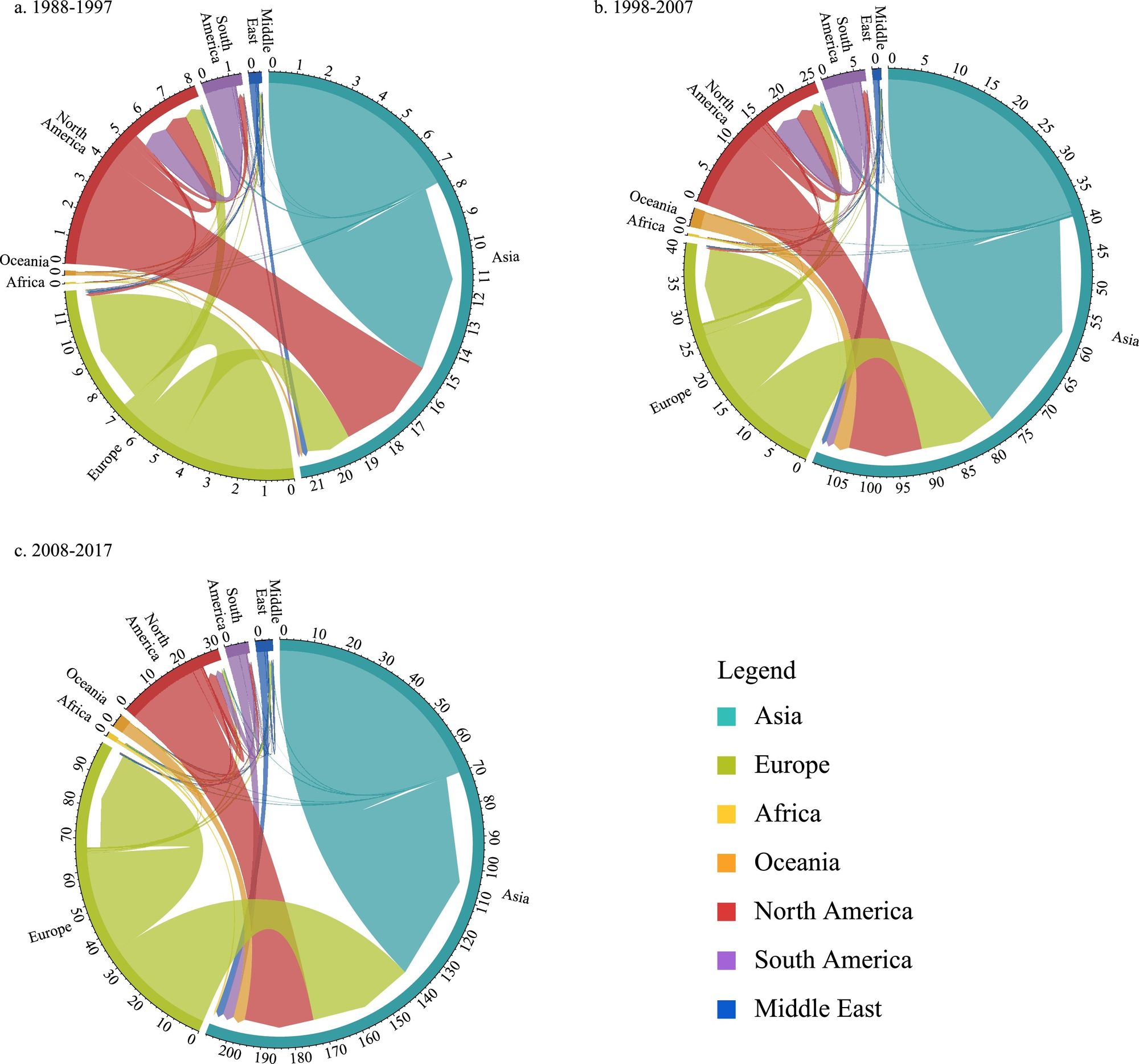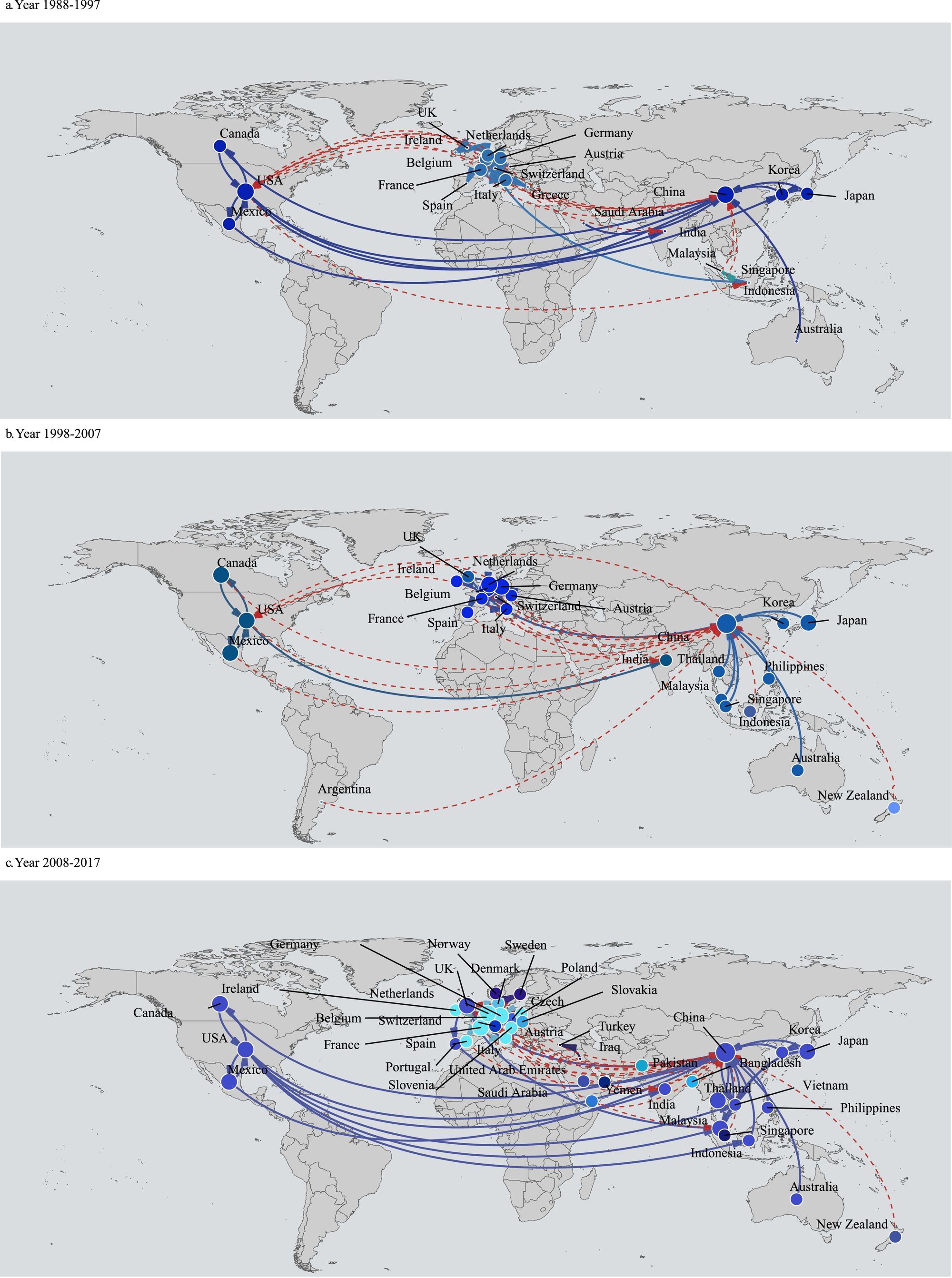Wang, Chao; Zhao, Longfeng*; Lim, Ming K; Chen, Wei-Qiang*; Sutherland, John W.
Resources, Conservation and Recycling 2020 153, 104591. DOI: 10.1016/j.resconrec.2019.104591
Abstract
Millions of tonnes (teragrams) of plastic waste are traded around the world every year, which plays an important role in partially substituting virgin plastics as a source of raw materials in plastic product manufacturing. In this paper, global plastic waste trade networks (GPWTNs) from 1988 to 2017 are established using the UN-Comtrade database. The spatiotemporal evolution of the GPWTNs is analyzed. Attention is given to the country ranks, inter- and intra-continental trade flows, and geo-visual communities in the GPWTNs. We also evaluate the direct and indirect impacts of China’s plastic waste import ban on the GPWTNs. The results show that the GPWTNs have small-world and scale-free properties and a core-periphery structure. The geography of the plastic waste trade is structured by Asia as the dominant importer and North America and Europe as the largest sources of plastic waste. China is the unrivaled colossus in the global plastic waste trade. After China’s import ban, the plastic waste trade flows have been largely redirected to Southeast Asian countries. Compared with import countries, export countries are more important for the robustness of GPWTNs. Clearly, developed countries will not announce bans on plastic waste exports; these countries have strong motivation to continue to shift plastic waste to poorer countries. However, the import bans from developing countries will compel developed countries to build new disposal facilities and deal with their plastic waste domestically.
Evolution of inter- and intra-continental trade networks (unit: Tg).

Spatiotemporal evolution of the trade communities during the three sub-periods.
